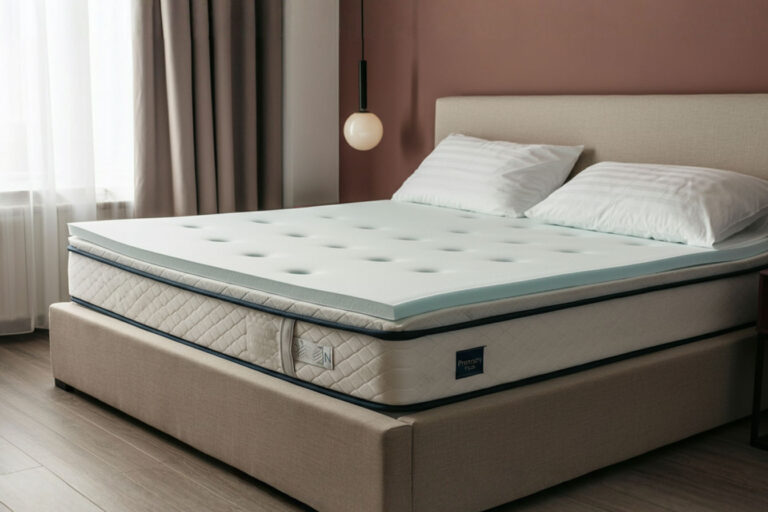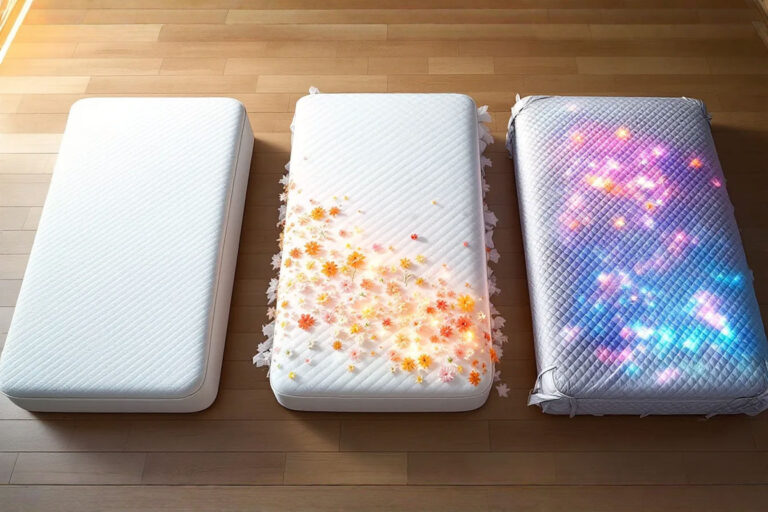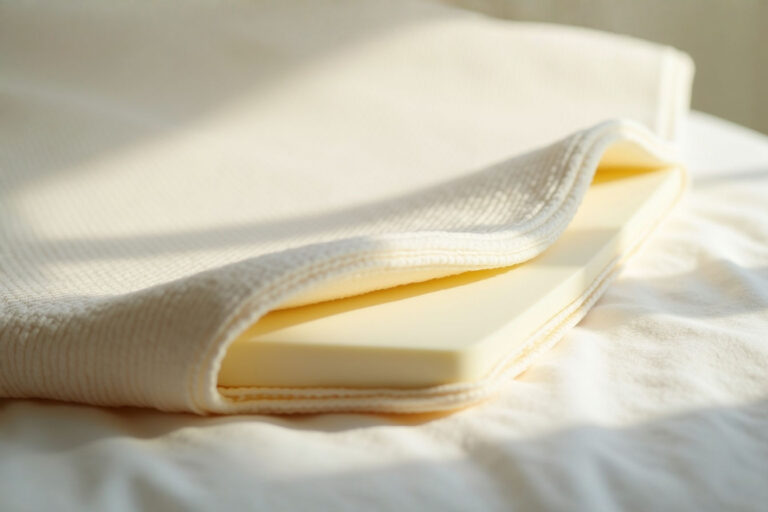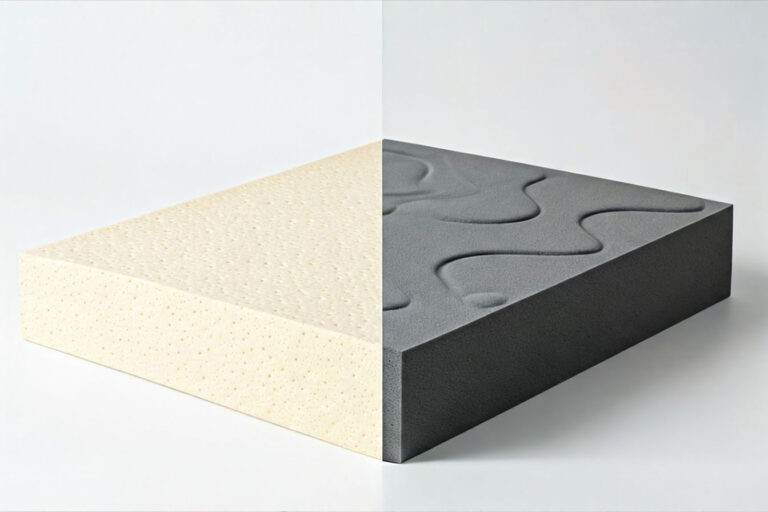Full Bed with Under Storage: How to Create a Clutter-Free Teen Bedroom in 3 Simple Steps
Discover how a full bed with under storage can revolutionize your teen’s bedroom organization. Our proven 3-step approach tackles clutter while teaching valuable life skills.
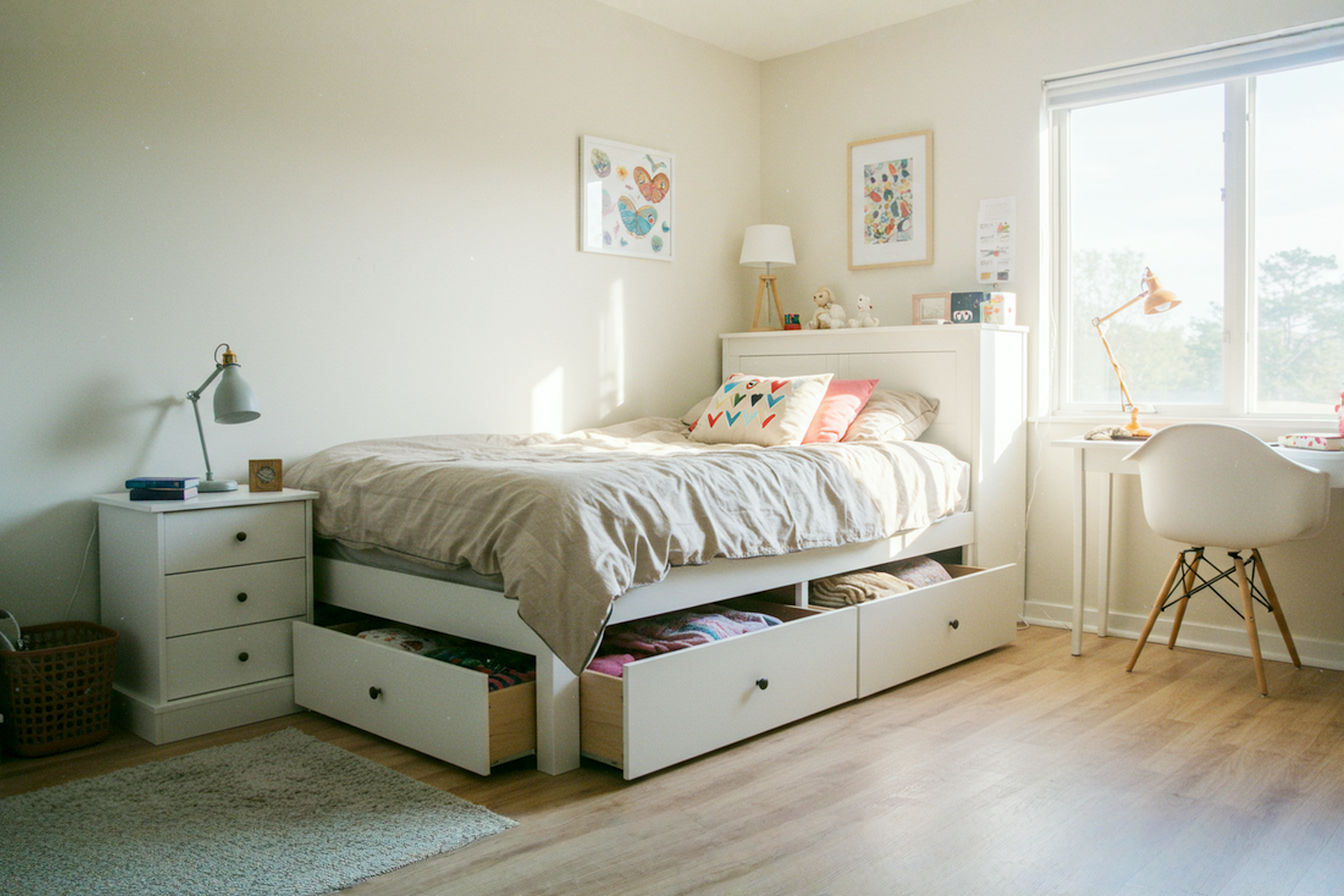
Teens and tidiness rarely go hand in hand. As parents navigate the challenging teenage years, the state of their child’s bedroom often becomes a source of ongoing frustration. Between school supplies, sports equipment, expanding wardrobes, and treasured collections, teenage bedrooms are bursting at the seams with possessions that seem to multiply overnight.
The good news? A strategic approach to bedroom furniture—specifically, a full bed with under storage—can transform even the most chaotic teen domain into an organized, functional space. This comprehensive guide will walk you through a simple three-step process to create a clutter-free teen bedroom that both you and your teenager will appreciate.
Understanding Storage Beds for Teens
Before diving into our three-step process, it’s important to understand what makes storage beds such a game-changing solution for teen bedrooms.
A full bed with under storage is exactly what it sounds like—a standard full-size mattress (54″ x 75″) supported by a bed frame that incorporates built-in storage elements beneath the sleeping surface. This innovative design transforms traditionally wasted space into valuable storage real estate, effectively doubling the functionality of the bed.
Types of Under-Bed Storage Options
Drawer Storage Beds feature pull-out drawers built into the base of the bed frame. These drawers typically slide out from the sides or front of the bed, providing easy access to stored items. The number of drawers varies by design, with some models offering two large drawers and others featuring four or six smaller compartments.
Platform Beds with Storage combine a sleek, modern aesthetic with practical storage solutions. These beds typically sit lower to the ground than traditional frames and eliminate the need for a box spring, creating space for drawers or cubbies within the platform structure.
Captain’s Beds represent one of the most storage-intensive options. Originally designed for ship captains who needed to maximize limited cabin space, these beds feature drawer systems on multiple sides, sometimes including bookcase headboards for additional storage.
Hydraulic Lift Storage Beds offer a different approach to under-bed storage. Rather than incorporating drawers, these beds feature a mattress platform that lifts up (usually assisted by hydraulic pistons), revealing a large storage compartment beneath. This design provides access to the entire under-bed area rather than just the perimeter.
Benefits of Storage Beds for Teenagers
Storage beds provide numerous advantages that address the specific challenges of teen bedroom organization:
Maximized Space Efficiency makes them ideal for smaller bedrooms where floor space is at a premium. By utilizing the area beneath the bed—space that would otherwise collect dust bunnies—storage beds effectively expand the room’s storage capacity without expanding its dimensions.
Reduced Visual Clutter contributes to a more peaceful environment. Unlike traditional under-bed storage solutions that might involve plastic bins or baskets visible beneath the bed skirt, integrated storage remains hidden from view, creating a cleaner aesthetic.
Simplified Cleaning Routines make maintenance easier for busy teens. With belongings stored in drawers rather than scattered across the floor, vacuuming and dusting become significantly less complicated tasks.
Growing Storage Needs of teenagers are accommodated through flexible storage options. As interests change and collections grow, the substantial storage space can adapt to evolving organizational requirements.
Transition to Adult Furniture is another advantage. Quality storage beds represent an investment in furniture that can transition with your teen into college dormitories or first apartments, unlike juvenile furniture that might be outgrown.
Now that we understand the foundation of our clutter-free bedroom strategy, let’s explore our three-step process for implementation.
Step 1: Selecting the Right Full Bed with Storage
The first and most crucial step in creating a clutter-free teen bedroom is selecting the appropriate storage bed. This decision will influence not only your teen’s sleep quality but also the room’s overall functionality and aesthetic appeal.
Assessing Bedroom Size and Layout
Begin by measuring the bedroom dimensions and creating a simple floor plan. A full-size bed measures 54″ x 75″, but you’ll need to account for additional space required by the storage bed frame and clearance for drawer operation.
The room layout dictates which type of storage bed will function best. In smaller rooms where the bed must be positioned against a wall, consider models with drawers on only one or two sides. Corner placements might benefit from hydraulic lift designs that don’t require clearance for drawer extension.
Room traffic patterns should influence your decision as well. Ensure that drawer operation won’t block doorways or impede movement around the room. Standard drawers require approximately 24-30 inches of clearance when fully extended.
Determining Storage Needs Based on Teen’s Lifestyle
Every teenager has unique storage requirements based on their interests and activities. Consider these common storage needs:
Athletic teens might need space for sports equipment, uniforms, and specialized gear that’s used seasonally.
Academically focused students often require storage for textbooks, project materials, and study supplies beyond what a desk can accommodate.
Fashionable teens with extensive wardrobes might benefit from drawer space dedicated to off-season clothing, accessories, or shoes.
Creative teenagers involved in art, music, or other creative pursuits may need storage for supplies, instruments, or project materials.
Engage your teen in this assessment process. Their input will prove valuable in designing a storage system they’ll actually use and maintain.
Material and Durability Considerations
Storage beds represent a significant investment, so durability should be a primary consideration. Look for these quality indicators:
Solid wood construction offers superior durability compared to particleboard or MDF options, though it typically comes with a higher price tag.
Dovetail drawer construction indicates quality craftsmanship and ensures drawers will withstand years of opening and closing without falling apart.
Smooth drawer operation with quality glides prevents frustration and damage. Ball-bearing drawer slides offer the smoothest action and greatest longevity.
Structural support is critical, especially for teenagers who might sit or jump on beds. Ensure the bed features robust central support legs in addition to corner supports.
Finish quality affects both appearance and durability. Look for even application, smooth surfaces, and protective clear coats that resist scratching and staining.
Style and Design Options That Appeal to Teens
While functionality drives this furniture choice, aesthetic appeal ensures your teen embraces the new piece rather than resenting it.
Contemporary designs featuring clean lines and minimal ornamentation appeal to many teens and coordinate well with diverse room styles.
Industrial-inspired options with metal accents and distressed wood finishes offer a mature aesthetic that resonates with many teenagers.
Traditional styles with more detailed woodwork might appeal to teens with classic tastes or complement existing furniture in the room.
Upholstered headboards add comfort and acoustic dampening properties, making them popular choices for teens who read or use devices in bed.
Color selection deserves careful consideration as well. While bright colors might appeal to younger teens, neutral tones offer greater longevity as tastes mature. Gray, navy, black, and natural wood finishes represent versatile options that can evolve with changing room designs.
Budget Considerations and Price Ranges
Storage beds span a wide price range, typically starting around $300 for basic models and extending well beyond $1,500 for premium designs. Establish your budget parameters early in the selection process, but remember that this furniture piece represents both a bed and a storage system.
Consider these cost-impact factors:
Material quality significantly affects price, with solid wood options commanding premium prices compared to engineered wood products.
Storage capacity influences cost, with more extensive drawer systems typically increasing the price point.
Brand reputation plays a role in pricing, though lesser-known manufacturers sometimes offer comparable quality at lower price points.
Additional features like built-in lighting, charging stations, or bookcase headboards add functionality but also increase cost.
Assembly requirements affect the total investment. Some budget-friendly options require DIY assembly, while higher-end pieces often include professional delivery and setup.
View this purchase as an investment in both current organization and future furniture needs. Quality storage beds often transition well to guest rooms when teens eventually leave home.
Top Features to Look for in Quality Storage Beds
As you evaluate specific models, prioritize these high-value features:
Dust-proofing elements like drawer bottoms that extend fully to the floor prevent dust accumulation beneath the drawers themselves.
Safety features such as drawer stops prevent drawers from being pulled completely out of the frame accidentally.
Sturdy drawer bottoms capable of supporting heavier items without sagging over time.
Integrated drawer organizers that help maintain order within the storage compartments themselves.
Soft-close mechanisms that prevent drawers from slamming shut, protecting both the furniture and fingers.
With these considerations in mind, you’re ready to select the ideal storage bed that will serve as the foundation of your teen’s organized bedroom. Once this cornerstone piece is in place, we can move to the second step in our process.
Step 2: Maximizing Under-Bed Storage Efficiency
Simply having storage drawers under the bed doesn’t automatically create organization. The second step in our process focuses on optimizing these spaces through thoughtful systems and strategies.
Organization Systems for Under-Bed Drawers
Treat each drawer as a mini organizational zone with its own purpose and system:
Drawer dividers create separate compartments within larger drawers, preventing items from becoming jumbled together. Adjustable dividers offer greater flexibility as storage needs change.
Fabric bins or baskets within drawers add another level of organization while making it easier to remove groups of items all at once.
Vacuum-sealed bags maximize capacity for seasonal clothing or bedding, compressing these bulky items to a fraction of their normal size.
Label systems help maintain organization, especially for drawers containing similar items. Even simple adhesive labels inside drawers can prevent the “dump and run” approach many teens default to.
Consistent folding methods like file folding (storing clothes vertically rather than stacked) allow for better visibility of drawer contents and make item selection easier without disrupting organization.
Categorizing Items for Optimal Storage
The most effective storage systems group similar items together based on logical categories. Consider these grouping strategies:
Frequency of use determines drawer placement. Items used daily should occupy the most accessible drawers, while seasonal or occasional items can be stored in less convenient locations.
Item type offers another organizational approach. Dedicate specific drawers to categories like clothing, school supplies, hobby materials, or keepsakes.
Size consistency creates more efficient storage. Storing similarly sized items together maximizes drawer space and prevents smaller items from becoming lost among larger ones.
Privacy considerations might influence some organizational decisions. Teens value private space, so consider designating one drawer as their “personal” space that isn’t subject to parental inspection (within reasonable safety limits).
Work with your teenager to develop categories that make sense for their specific belongings and habits.
Seasonal Rotation Strategies
Even the most spacious storage beds have finite capacity. Implementing a seasonal rotation system keeps currently needed items accessible while storing off-season belongings efficiently:
Quarterly assessments create natural opportunities to rotate seasonal clothing, sports equipment, or school supplies.
Vacuum storage bags maximize space efficiency for bulky winter items during summer months and vice versa.
Clear documentation helps track what’s stored where. A simple inventory list kept in each drawer helps quickly locate items that aren’t currently in rotation.
Transition periods between seasons provide ideal opportunities to assess what was actually used and what might be outgrown or unwanted, creating natural culling points.
This rotation system teaches valuable life skills while preventing storage areas from becoming permanent repositories for forgotten items.
Maintenance and Accessibility Considerations
The most beautifully organized storage system fails if it’s not maintained. These strategies promote ongoing organization:
Weekly reset routines take just minutes but maintain organizational systems. Schedule a consistent time each week for your teen to restore order to their storage drawers.
Accessibility principles ensure frequently used items remain easy to retrieve and replace. The extra seconds required to open a drawer should be balanced by the ease of finding what’s needed.
Designated landing zones near the bed provide places for items in current use that will be returned to storage later, preventing them from accumulating on other surfaces.
Regular reassessment of the organizational system allows it to evolve with your teen’s changing needs and preferences.
Remember that perfect organization isn’t the goal—functional organization that works with your teen’s actual habits creates the most sustainable results.
Space-Saving Folding Techniques
How items are placed in drawers significantly impacts storage capacity. These folding and storing methods maximize available space:
File folding (storing folded clothing vertically rather than stacked) allows for better visibility and access without disrupting other items.
Rolling techniques work well for t-shirts, pajamas, and other casual items, reducing wrinkles while maximizing space efficiency.
Bundling methods combine multiple items (like matching outfits) into single units, streamlining both storage and morning routine.
Compression approaches for bulkier items like sweaters or hoodies reclaim valuable drawer space.
Demonstrate these techniques and practice them with your teen until they become second nature.
Using Storage Containers Within Drawers
Strategic use of secondary containers creates micro-organization within the larger storage system:
Shallow bins with low profiles maximize vertical space while keeping smaller items contained.
Expandable drawer dividers adjust to drawer dimensions, creating customized compartments.
Stackable containers utilize vertical space within deeper drawers.
Repurposed packaging like shoe boxes can create free drawer dividers, though more durable solutions typically last longer in teen bedrooms.
Open-top containers remove the barrier of having to open a lid, increasing the likelihood that items will be properly put away.
With the under-bed storage now optimized, we can move to the final step in our process: creating a comprehensive bedroom organization system.
Step 3: Complementing Your Storage Bed with a Complete Organization System
The storage bed serves as the cornerstone of the organized teen bedroom, but true clutter-free living requires a holistic approach to the entire space.
Coordinating Additional Bedroom Furniture
Select complementary furniture pieces that continue the storage-focused theme:
Nightstands with drawers or shelves provide convenient storage near the bed for items needed during the night or first thing in the morning.
Desks with built-in organization systems reduce academic clutter while providing dedicated workspace.
Dressers that complement the storage bed’s style create design coherence while providing additional clothing storage if needed.
Seating with storage options like ottomans or storage benches serve dual purposes in the teen bedroom.
Ensure furniture scale harmonizes with the room dimensions—oversized pieces in small rooms create visual and physical clutter regardless of their storage capacity.
Vertical Storage Solutions to Pair with Storage Beds
Maximize the room’s full potential by utilizing vertical space:
Tall bookcases provide generous storage while occupying minimal floor space.
Wall-mounted shelving creates display and storage areas without consuming floor space.
Over-door organizers utilize often overlooked space for additional storage.
Pegboard systems offer flexible storage for frequently used items and can be reconfigured as needs change.
Floating shelves add architectural interest while providing practical storage and display space.
Consider visibility factors when implementing vertical storage. Open shelving requires greater discipline to maintain a tidy appearance, while closed storage conceals visual clutter but may be less accessible.
Wall Organization Systems That Work with Storage Beds
Walls offer abundant storage opportunities that complement under-bed systems:
Grid organizers provide flexible storage for papers, photos, and lightweight items.
Magnetic strips or boards keep metal items organized and accessible.
Corkboards or bulletin boards manage papers and visual inspiration.
Specialized hooks and hangers accommodate items like hats, bags, or sports equipment.
Modular wall systems combine various storage elements that can be reconfigured as needs change.
Many wall systems also allow for personalization, satisfying teens’ desire for self-expression while maintaining organizational functionality.
Creating Zones in the Teen Bedroom
Zoning the bedroom creates intuitive organization by grouping similar activities and their associated items:
Sleep zone centered around the storage bed contains bedding, pajamas, and nighttime essentials.
Study zone incorporates desk, academic supplies, and reference materials.
Leisure zone might include gaming equipment, books, or hobby supplies.
Grooming zone contains personal care items and perhaps a mirror or vanity area.
Social zone might feature seating for friends or space for virtual socializing via technology.
Clearly defined zones help teens internalize where items belong and make the bedroom more functional for various activities.
Technology Storage Considerations
Modern teens own multiple electronic devices, each with accessories and charging requirements:
Charging stations keep devices powered while containing cord clutter.
Cable management solutions prevent the tangle of wires that quickly creates visual chaos.
Protective storage for valuable electronics prevents damage and loss.
Designated locations for different devices (gaming, school, communication) support appropriate technology use.
The rapid evolution of technology makes flexible storage solutions particularly valuable in this category.
Maintaining the Organizational System Long-Term
Creating organization is just the beginning—maintaining it requires ongoing attention:
Regular decluttering sessions prevent accumulation of unwanted items. Schedule quarterly review sessions to assess what can be donated, recycled, or discarded.
One-in-one-out policies for certain categories like clothing or collectibles prevent storage systems from becoming overwhelmed.
Photo documentation of properly organized areas provides visual reference for maintaining systems.
Positive reinforcement rather than criticism helps teens associate organization with positive feelings rather than punishment or control.
Gradual responsibility transfer ensures teens develop ownership of their space, with parents providing decreasing levels of oversight as organizational habits solidify.
Remember that perfect organization isn’t sustainable for most teens—aim for functional systems that accommodate their actual habits while teaching incrementally better organizational skills.
Design and Style Considerations
While function drives our organization strategy, thoughtful design ensures the space reflects your teen’s personality while supporting their changing needs.
Trending Styles for Teen Storage Beds
Current design trends offer something for every teen’s taste:
Minimalist designs featuring clean lines and uncluttered surfaces appeal to teens seeking a mature, sophisticated aesthetic.
Industrial elements like metal accents, exposed hardware, and distressed finishes create edgy interest that resonates with many teenagers.
Multifunctional pieces that combine storage with other features like built-in desks or seating areas maximize both function and style in smaller rooms.
Neutral color palettes with personalized accent colors offer longevity as tastes change while still reflecting individual preferences.
Natural materials and biophilic design elements connect with environmental consciousness while creating calming, grounded spaces.
The most successful bedroom designs balance current trends with timeless elements that won’t quickly become dated.
Personalizing the Storage Bed
Storage beds provide numerous opportunities for personalization:
Bedding choices offer low-commitment ways to express changing tastes and preferences.
Headboard alternatives like wall decals, fabric panels, or artwork create focal points that can evolve over time.
Lighting integration with LED strips or puck lights adds ambiance while improving functionality.
Hardware updates on drawers or cabinet fronts can transform the look of the entire piece with minimal investment.
Temporary modifications like removable wallpaper applied to drawer fronts personalize the piece without permanent changes.
Encourage creativity in personalization while establishing boundaries that protect the furniture’s integrity and longevity.
Color Schemes That Grow with the Teen
Strategic color selection creates rooms that evolve gracefully through the teenage years:
Neutral bases for major furniture pieces and wall colors provide versatile foundations.
Accent colors in easily changed elements like textiles, artwork, and accessories allow for expression without major renovation.
Coordinated color schemes rather than exact matches create sophisticated design that doesn’t appear overly themed.
Color psychology considerations can support bedroom functions—cooler tones for sleep areas, energizing colors for study zones.
Gradual transitions between color preferences maintain the room’s cohesion while accommodating changing tastes.
View color as a design layer that can evolve rather than a permanent commitment.
Balancing Function and Aesthetic Appeal
The most successful teen bedrooms harmonize practical needs with design aspirations:
Hidden functionality preserves clean aesthetics while providing necessary organization.
Dual-purpose elements satisfy both practical requirements and design preferences.
Attractive organizational tools elevate utilitarian storage to design elements.
Strategic compromises between teen preferences and practical considerations create livable, attractive spaces.
Design evolution plans that accommodate growth and changing needs prevent frequent major overhauls.
Remember that even the most beautifully designed space fails if it doesn’t function for its occupant’s actual lifestyle.
Incorporating the Teen’s Input in the Design Process
Meaningful involvement in the design process increases teens’ investment in maintaining their space:
Collaborative planning with clear parameters regarding budget and practical requirements.
Curated choices that guide decision-making while respecting preferences.
Design boards or digital planning tools that visualize options before commitment.
Phased implementation that prioritizes needs while planning for wish-list items.
Ownership language that emphasizes the teen’s role in creating and maintaining their ideal space.
This collaborative approach teaches valuable life skills while respecting teens’ growing autonomy.
Installation and Setup
The transition to the new storage bed system requires thoughtful planning and implementation.
Preparing the Bedroom Space
Proper preparation ensures smooth installation:
Complete space clearing including temporary furniture removal creates adequate working room.
Floor cleaning and inspection addresses any issues before they’re concealed beneath the new bed.
Wall repairs for any damage from previous furniture should be completed before installation.
Electrical considerations like outlet access or cord management should be addressed proactively.
Room measurements verification confirms the selected bed will fit as intended in the actual space.
This preparation phase provides an excellent opportunity for deeper cleaning and decluttering.
Assembly Considerations (DIY vs. Professional)
Decide whether professional or DIY assembly best suits your situation:
Complexity assessment of the specific storage bed model helps determine skill requirements.
Tool inventory ensures all necessary equipment is available before beginning DIY assembly.
Time requirements for assembly should be realistically estimated, often doubling manufacturer estimates.
Professional installation costs should be factored into the overall budget when comparing options.
Future disassembly needs if moves are anticipated might influence both purchasing and assembly decisions.
Many storage beds represent significant investments, making professional assembly worth considering despite the additional cost.
Safety Considerations
Prioritize safety in both selection and installation:
Weight capacity verification ensures the bed will safely support your teen, especially for loft-style storage beds.
Stability testing after assembly confirms the structure doesn’t wobble or shift.
Sharp edge inspection identifies any areas needing modification to prevent injury.
Drawer stop verification ensures storage components operate safely without pulling completely out.
Weight distribution guidance for drawer contents prevents tipping or structural stress.
Document assembly for future reference, including keeping manufacturer contact information accessible.
Making the Bed Accessible for Cleaning
Maintainable spaces stay organized longer:
Vacuum clearance beneath and around the bed facilitates regular cleaning.
Movability considerations if the bed needs occasional relocation for deep cleaning.
Dust-reduction strategies like sealing the space between the floor and the lowest drawers.
Accessible corners that can be reached with cleaning tools prevent dust accumulation.
Washable storage components like removable drawer liners simplify ongoing maintenance.
These practical considerations often get overlooked during selection but significantly impact long-term satisfaction.
Maintenance Tips for Longevity
Protect your investment with proper care:
Manufacturer guidelines for cleaning and maintenance should be followed and documented.
Regular hardware tightening prevents loosening from normal use.
Drawer glide lubrication maintains smooth operation and prevents damage.
Weight distribution awareness across drawers prevents structural stressing.
Seasonal checking for any developing issues allows early intervention before problems escalate.
Quality storage beds can serve your family for decades when properly maintained.
Real-Life Success Stories
Learning from others’ experiences provides both inspiration and practical guidance.
Before and After Transformations
These remarkable teen bedroom transformations illustrate the power of storage-centered design:
Case Study: Michael’s Gaming Haven Before: Gaming equipment spread across multiple surfaces, creating constant clutter and limiting actual play space. After: Captain’s bed with dedicated gaming equipment drawers, wall-mounted monitors, and integrated cable management created a streamlined space that accommodated his passion while maintaining organization.
Case Study: Emma’s Fashion Studio Before: Clothing stored in multiple locations, resulting in “nothing to wear” frustration despite an extensive wardrobe. After: Platform storage bed with seasonal rotation system, color-coded drawer organization, and integrated accessory storage transformed her relationship with her wardrobe and morning routine.
Case Study: Jayden’s Academic Retreat Before: Study materials scattered between desk, floor, and bed, creating homework frustration and lost assignments. After: Storage bed with dedicated academic drawers, coordinated desk organization, and weekly reset routine dramatically improved academic performance and reduced school-related stress.
Each transformation began with the storage bed as the organizational anchor but extended to comprehensive room systems.
Testimonials from Parents and Teens
Real experiences highlight the impact of storage-centered bedroom transformations:
“The difference in my daughter’s stress level since reorganizing her room around a storage bed has been remarkable. She actually spends time in her room now rather than avoiding it.” —Parent of 16-year-old
“I was skeptical about giving up my old bed, but having actual places for all my stuff makes everything easier. I can find what I need, and I don’t feel embarrassed when friends come over anymore.” —Teen, age 15
“As a parent of teens with ADHD, I’ve tried countless organizational systems. The storage bed approach has been the only one that actually stuck, probably because it doesn’t require extra steps to maintain.” —Parent of teens with executive function challenges
“My room used to be a constant battle with my parents. Since getting organized with my new storage bed system, we hardly ever argue about my room anymore. It’s actually stayed decent for almost six months now.” —Teen, age 17
These testimonials underscore that organization impacts not just the physical space but family dynamics and teen well-being.
Lessons Learned from Real Implementations
Experience has taught valuable lessons about successful teen bedroom transformations:
Teen involvement correlates directly with organizational sustainability—systems designed without their input rarely last.
Starting with too-perfect systems often backfires; beginning with simpler organization that can evolve proves more sustainable.
Regular reassessment prevents organizational drift, with quarterly reviews offering natural opportunities to refine systems.
Celebrating organizational wins rather than criticizing lapses builds positive associations with tidiness.
Patience during transition periods yields better long-term results than expecting immediate perfection.
These insights help set realistic expectations for your own bedroom transformation project.
Common Challenges and Solutions
Anticipating typical obstacles improves implementation success:
Challenge: Initial resistance to new organizational systems. Solution: Start with organizing categories the teen cares about most, demonstrating immediate benefits rather than imposing complete systems simultaneously.
Challenge: Consistency in maintaining organizational systems. Solution: Build maintenance into existing routines rather than creating separate organizational tasks, and use visual cues to reinforce systems.
Challenge: Growing collections that overwhelm storage capacity. Solution: Implement gentle containment policies like “one-in-one-out” rules for certain categories and schedule regular decluttering sessions.
Challenge: Shared bedrooms with competing organizational needs. Solution: Create clearly defined personal zones with agreed-upon shared space policies and separate storage areas.
Challenge: “Invisible” storage becoming a dumping ground. Solution: Implement clear organizational systems within drawers and schedule regular quick checks of hidden storage areas.
Proactive planning for these common challenges increases your transformation’s chances of long-term success.
Conclusion
The journey to a clutter-free teen bedroom centers around one cornerstone solution: the full bed with under storage. This multifunctional furniture piece addresses the unique challenges of teen spaces by maximizing available square footage and providing dedicated homes for diverse belongings.
Our three-step approach—selecting the right storage bed, maximizing storage efficiency, and creating a comprehensive organizational system—transforms not just the physical space but the teen’s relationship with their environment. This transformation often extends beyond the bedroom, building life skills that serve them through college, first apartments, and beyond.
Remember that organization is not a destination but an ongoing process. The systems established today will evolve as your teen grows and their needs change. By creating flexible, intuitive organization centered around the storage bed, you provide both immediate benefits and long-term organizational foundations.
The investment in a quality storage bed and complementary organizational systems pays dividends beyond mere tidiness—it creates functional space for academic success, social connection, creative expression, and personal growth during these formative years. Perhaps most valuably, it reduces parent-teen conflict around bedroom cleanliness, allowing your relationship to focus on more meaningful connections rather than constant cleanup reminders.
Your teenager stands at the threshold between childhood and adulthood. Their bedroom serves as both private retreat and practice ground for independent living. By involving them in creating and maintaining their organized space, you provide practical life skills while respecting their growing autonomy—a balance that strengthens your relationship while preparing them for the future.
The clutter-free teen bedroom awaits—and it begins with a full bed with under storage.

